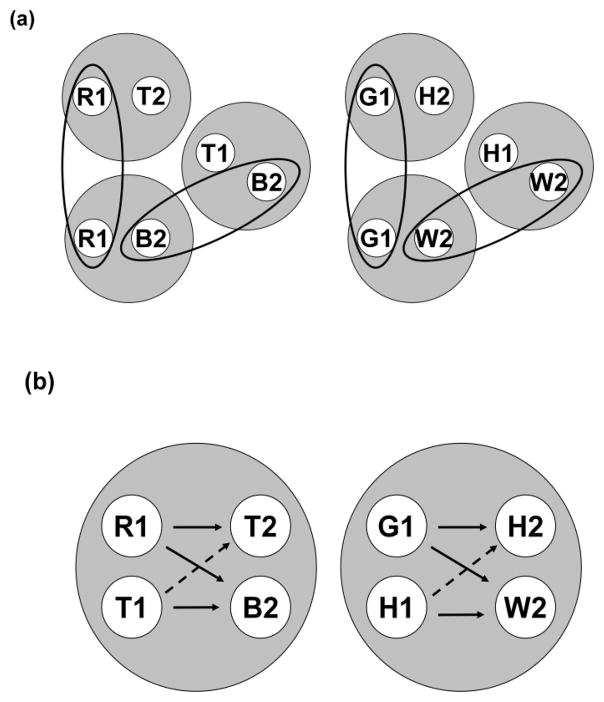Figure 16.
(a) The six stimulus classes hypothesized to result from AB, BC, and AC successive matching training. R = red, G = green, B = blue, W = white, T = triangle, H = horizontal, 1 = first ordinal position (sample stimulus), 2 = second ordinal position (comparison stimulus). Ellipses highlight common elements across classes. (b) The two 4-member stimulus classes hypothesized to result from class merger via common elements. Solid and broken arrows denote explicitly trained relations and predicted reflexivity relations, respectively. R = red, G = green, B = blue, W = white, T = triangle, H = horizontal, 1 = first ordinal position (sample stimulus), 2 = second ordinal position (comparison stimulus).

